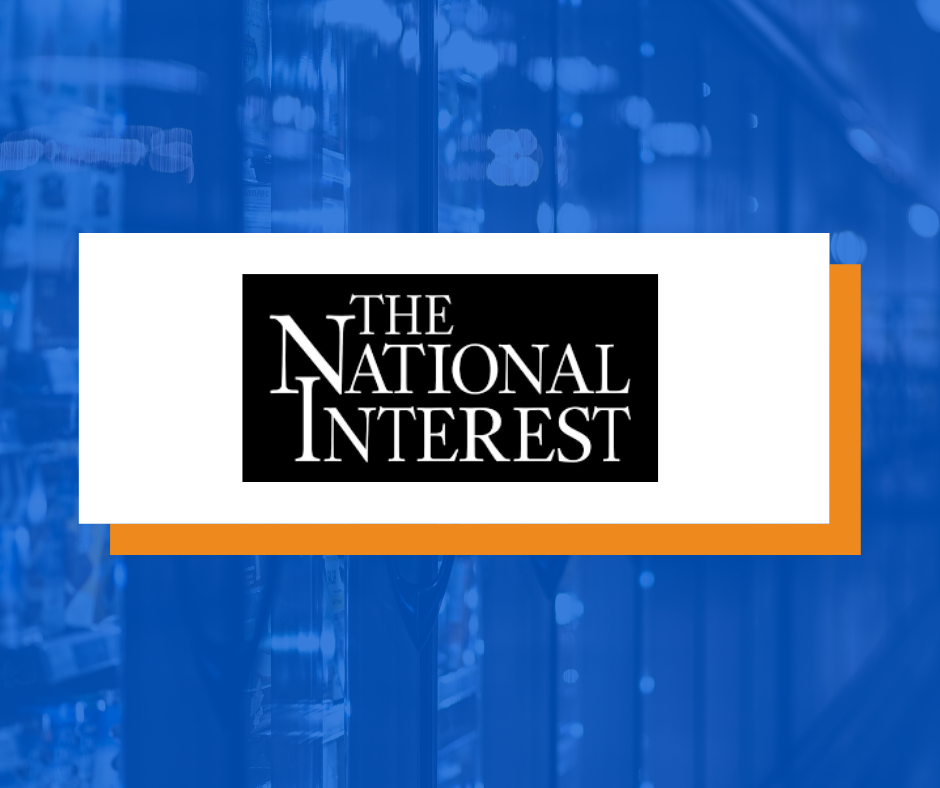With growing international recognition of the danger to public health the World Health Organization poses, it is pleasing to see that across the pond a bi-partisan committee has been established to launch an inquiry into the scandal-prone taxpayer-funded bureaucracy.
The All Party Parliamentary Group for Vaping, comprised of Members of Parliament across all sides of politics, is currently collecting evidence on the failures of the UN’s anti-tobacco harm reduction policies.
The Americans for Tax Reform Affiliate, the Property Rights Alliance, submitted the following testimony to the Inquiry (full version with citations may be downloaded here):
29 January 2021
Subject: Comments to the All-Party Parliamentary Group for Vaping Inquiry into the Ninth Conference of the Parties
Dear Chairman Pawsey,
Thank you for the opportunity to submit comments to the All-Party Parliamentary Group for Vaping (APPG) inquiry into the Ninth Conference of the Parties (COP9).
Property Rights Alliance (PRA) is an international advocacy and research organization based in Washington, D.C. dedicated to protecting intellectual property rights, physical property rights and promoting innovation around the world.
1.UK Government policies should promote the successful quit aid tools.
There is a consensus in the United Kingdom among academics, scientists, and the medical community that reduced-risk tobacco alternatives such as vaping e-cigarettes are significantly less harmful than smoking combustible cigarettes. Extensive research by Public Health England and the Royal College of Physicians has determined that by providing users with nicotine, but bypassing the combustion process that is the main cause of tobacco-related morbidity, electronic cigarettes are 95% less harmful (Public Health England, 2018) than combustible tobacco. For this reason, over 30 of the world’s leading public health organizations have endorsed nicotine vaping as safer than smoking and an effective way to help smokers quit.
In addition to their relative safety compared to combustible tobacco, scientific data support the function of vaping products as a successful quit aid tool considerably more effective than traditional nicotine replacement therapies. A 2019 study by the U.K. National Health Service published in the New England Journal of Medicine found that e-cigarettes may help adults quit. A group assigned to e-cigarettes as a combustible tobacco replacement were more likely to remain abstinent at one year compared with a group using nicotine replacement products (18% versus 9.9%).
According to a report commissioned on e-cigarettes by the National Academies of Sciences, Engineering and Medicine (2018) which analyzed the findings of 800 peer-reviewed studies, it was determined that there is moderate evidence that risk and severity of dependence are lower for e-cigarettes than combustible tobacco cigarettes. and that there is conclusive evidence that completely substituting e-cigarettes from combustible tobacco cigarettes reduces a user’s exposure to numerous toxicants. The published update of the Cochrane Collaboration review in October 2020 also showed that e-cigarettes helped smokers to achieve long-term smoking abstinence. It assessed the results of 50 studies from across 13 jurisdictions, representing 12,430 participants.
As a result of their effectiveness as an aid to quit smoking, e-cigarettes have become extremely popular, increasing from about seven million users in 2011 to 41 million in 2018 (Euromonitor International). Over the next 10 years about six million premature deaths could be averted, if most smokers switched to e-cigarettes.With the introduction of e-cigarettes, a rapid drop in the smoking rate has coincided from 19.3% in 2010 to 13.7% in 2018.
Public Health England has played a significant role in advancing evidence-based policymaking and ensuring that alternative nicotine delivery devices, which are less harmful than smoking, are available to smokers who are trying to quit. As such, this is in line with Government Policy to reduce mortality rates.
The FCTC has as its mission to ‘protect present and future generations from the devastating health, social, environmental and economic consequences of tobacco consumption and exposure to tobacco smoke …. to reduce continually and substantially the prevalence of tobacco use and exposure to tobacco smoke.’ Policies enacted under this framework must therefore aim to actually reduce smoking prevalence. Evidence has demonstrated that recent policies promulgated have not only strayed from this goal but are in active opposition to it. While the UK has played a positive role in terms of reducing the burden of people smoking, and with e-cigarettes helping millions of adult smokers quit smoking, it is disturbing that the World Health Organization thus far refuses to acknowledge the science and is actively advising governments against effective tobacco harm reduction policies. The government of the United Kingdom should promote harm-reducing practices within the WHO discussions and reduce barriers to access innovative products that are game-changers for smoke-free policies. Any measures that COP9 will propose should recognize the data presented and consider the UK national experience.
The United Kingdom, as a global leader in tobacco control, can ensure that regulatory measures are based on sufficient and convincing data. This is the only case to implement realistic measures to each country that will be efficient. A general idea about the protection of public health is not enough. The reports to COP9 will likely continue to recommend that countries either ban new harm reduction products or regulate them strictly to discourage their use. An example of strict regulation is the Plain Packaging implemented for tobacco, which has been conclusively proven to have failed to have any impact upon smoking rates in any jurisdiction where it has been tried but has instead led to a boon in black market illicit tobacco smuggling by international criminal syndicates.
2.The discussions within the WHO and COP do not reflect real-life evidence.
The policy positions presented by WHO should be based in realistic and accurate criteria about tobacco consumption and efficacy of harm reduction tobacco products. A procedure based in transparency and public consultation will contribute more to the goal of smoking reduction. The Advisory Bodies (TobReg and TobLanNet) and the Governing body of COP should collect data from independent scientific teams and make them visible to countries like the UK. Similarly, it is a fundamental principle of good government that decisions be made in an open, accountable, and transparent manner. Unfortunately, COP meetings operated behind closed doors, with no opportunity for journalists, scientists or non-profit watchdogs to observe or participate. Furthermore, there is no public consultation between the release of the Secretariat report and the COP session. WHO should make transparency part of their policy.
As most anti-tobacco policies and legislation ratified under the WHO Framework Convention on Tobacco Control (WHO FCTC) aim to reduce smoking prevalence, the justification of COP proposals should be formed based on the smoking rate of each category (adults, youth etc), the tobacco consumption and the success of the quit aid tools in each country. Massive bans or brand removals are trade tactics oriented towards the market structure and not the protection of public health. Prohibition time and time again has been shown to fail.
In contrast to the “abstinence only” policy of the WHO, Public Health England (PHE) has offered guidance for employers and organizations looking to introduce policies around e-cigarettes and vaping in public and recommends that such policies should be evidence-based. This is a more sensible system of regulation, which works with consumers to ensure better public health outcomes. It is noted that the UK government can further improve some aspects of its tobacco policy and the constraints (health warnings and advertising ban) imposed by the EU Tobacco Products Directive should be removed so as to ensure smokers have access to appropriate information regarding the health benefits of quitting smoking through vaping.
3.The tobacco control policies for adolescents and the unintended consequences of proposals.
In the UK, the rate of minors using vape products has consistently been below 2 percent.Data from the 2019 ASH YouGov Smokefree youth GB survey suggest that a large majority (93.8% in total) of children ages 11-18 in the UK who have never smoked have also never used an e-cigarette (87.8%) or are not even aware of them (6.0%). The overall trend in tobacco use over time in both adults and children has been downwards since 2010, when e-cigarette use became widespread among adult smokers and ex-smokers (Adult smoking habits in the UK, 2017-2018). A 2018 report by Public Health England found that e-cigarettes are attracting very few young people who have never smoked into regular use and that e-cigarette use among never-smokers is less than 1%. A possible flavor taste ban is a policy measure hurting the public health and the UK Government should be aware of the unintended consequences of such measures. Governmental policies should protect young people and at the same time provide a cessation aid for people attempting to quit smoking.
The United Kingdom followed the European Tobacco Products Directive in response to the WHO’s call to action in preventing youth from using tobacco products. In a framework of going completely ‘smoke-free’ by 2030, the UK banned the manufacture and sale of menthol cigarettes since 20 May 2020, despite the lack of evidence of flavored tobacco being responsible for any increased tobacco usage. Alternative products such as menthol vaping products are still available in the market. In some countries such as Netherlands, the Government proposed banning flavors in electronic vaping products as well, a measure that failed to consider the public health benefit of a harm reduction tool.
Flavors must remain available through legal channels as a matter of consumer safety. Otherwise, the black-market will flourish while putting dangerous products in the hands of thousands of consumers. Banning vape flavors practically misinforms smokers about the relative risks of e-cigarettes and limits the usefulness of vaping. Significantly more adults and youth may go back to smoking combustible tobacco. According to the Consumer Choice Center, access to flavors increases the likelihood of quitting smoking by 230% and 260,363 vapers would be driven back to smoking without them.
According to the ASH Smokefree Great Britain 2019 Survey, if the flavours were banned, 1 in 5 smokers said they would either smoke more tobacco or return to smoking tobacco. A US 2017 survey of young adults using both e-cigarettes and vaping products, indicated that a ban on e-liquid flavors would lead to increases in combustible cigarette use and simultaneously lead to reductions in e-cigarette use. As such, any proposals through the COP process to further restrict access to flavoured vaping products would without doubt lead to an increase in people smoking combustible cigarettes.
4.WHO bans the use of tobacco harm reduction tools, moving away from FCTC objectives.
According to the latest Global State of Tobacco Harm reduction (GSTHR) report(GSTHR, Burning Issues 2020) almost 100 million people are now using a range of vaping products and they do not use combustible cigarettes at all. The evidence provided by this report shows the effect of harm reduction products such as e-cigarettes on the global decline in cigarette consumption per adult.
On the contrary WHO in its latest report from their expert committee on Tobacco Product Regulation, released December 23rd, recommended to ban and prohibit e-cigarettes and heated tobacco products (WHO Expert Committee Meeting Report, Dec 23, 2020). This recommendation conflicts with the FCTC protocol to Eliminate Illicit Trade in Tobacco Products that aimed at eliminating all forms of illicit trade in the tobacco environment. The banning of vaping products would lead the smokers to purchase their e-cigarettes from illicit markets or from jurisdictions where they are legal. Public health may be damaged with a sharp rise in smuggling and sale of illegal e-cigarettes. Illicit trade of e-cigarettes is a mounting problem across the globe that hurts economies and also may be used to fund terrorist and similar criminal enterprises. Furthermore, it ignores the scientific evidence provided indicating the power of vaping products to increase quit rates more effectively or to modify behaviors associated with combustible cigarettes.
Despite the fact that the WHO Framework Convention on Tobacco Control (FCTC) aims to reduce harmful tobacco consumption, there have only been a few attempts to empirically evaluate the impact of this international treaty. Unfortunately, there is no empirical interventional study to evaluate the effectiveness of the decision to adopt a tobacco control treaty as a strategy for reducing global cigarette consumption. Analysis of tobacco consumption trends is necessary to discern patterns for future tobacco control policies including the different priorities of each country’s strategy. No internationally comparable data on tobacco consumption are available for analysis by quasi-experiment. An interdisciplinary and international collaboration is necessary under the WHO, setting down standards for research and assessing risk and benefits.
Among FCTC’s mandates was the investigation of novel tobacco products. The FCTC is not a good forum for encouraging new ideas. The investigation by FCTC apparently is limited to strict regulations of tobacco products that often referred to the products as a “serious barrier to progress”.There is a persistent problem with the WHO relying on poor evidence or the motivated reasoning of activists. The WHO Executive Board 146th session meeting (February 2020) called for countries to ban or restrict the use of e-cigarettes and novel and emerging tobacco products. FCTC has examined a limited amount of scientific evidence and, by their own admission, “international scientific consensus was not yet reached”on the existing health effects.
WHO should take a fresh look at the function of e-cigarettes as a harm reduction tool and accept the progress that the tobacco industry has made in developing products that are able to significantly reduce smoking. Science should come first in every health issue or situation. The pandemic crisis confirmed this statement. Policies of WHO, including plain packaging and banning of vaping products, damage Intellectual Property Rights and innovation. States can protect public health without damaging private property right protections and security of innovation. Tobacco control should be a social, public health, and quality-of-life concern rather than a business and trade issue.
5. Intellectual Property Rights are significant for the innovative harm-reducing products.
E-cigarettes became possible only due to strong intellectual property rights in a competitive open market. Intellectual property rights connect innovators with consumers’ demand for harm-reducing products. States can protect public health without compromising the protection of private property rights and market-driven innovation. The effective protection of intellectual and property rights is essential and can promote investment in the market.
When a ban in tobacco products is introduced, the right to property (Article 1, First Protocol to the European Convention on Human Rights) is weighed against the legitimate interest of public health. The rationale for the health function of banning vaping products contradicts the overwhelming evidence on e-cigarettes as the most successful quit aid. It is a discriminatory measure for consumers, who are denied the access to products with reduced risk. It may support some fundamental rights including the right to health and a clean environment, but it unduly violates the right to liberty, property and equality. Practices like these, discourage investment and put businesses at risk of losing their competitive edge. Policies that undermine innovation often have unintended consequences, and Property Rights Alliance opposes all measures that have irreparable harm to intellectual property.
6. Conclusion
The initial intention of the COP process was to reduce tobacco dependency and the associated mortality caused by the smoking of conventional tobacco products. In actively opposing the opportunities presented by newer reduced-risk tobacco alternatives such as e-cigarettes, the World Health Organization is now actively working against its stated mission. It is furthermore deeply troubling that independent scientific experts remain excluded from the COP9 process, and the complete lack of transparency and consultation violate every norm of sound public policy.
As a result of the WHO pursing a policy agenda that is contrary to science, the UK faces significant threats that its successful harm reduction model may be undermined, and access to life-saving products may be restricted. As such, unless the UK and like-minded pro-science governments are able to achieve serious structural reform in the WHO, the UK needs to re-evaluate its participation in the FCTC.
Originally published here.




